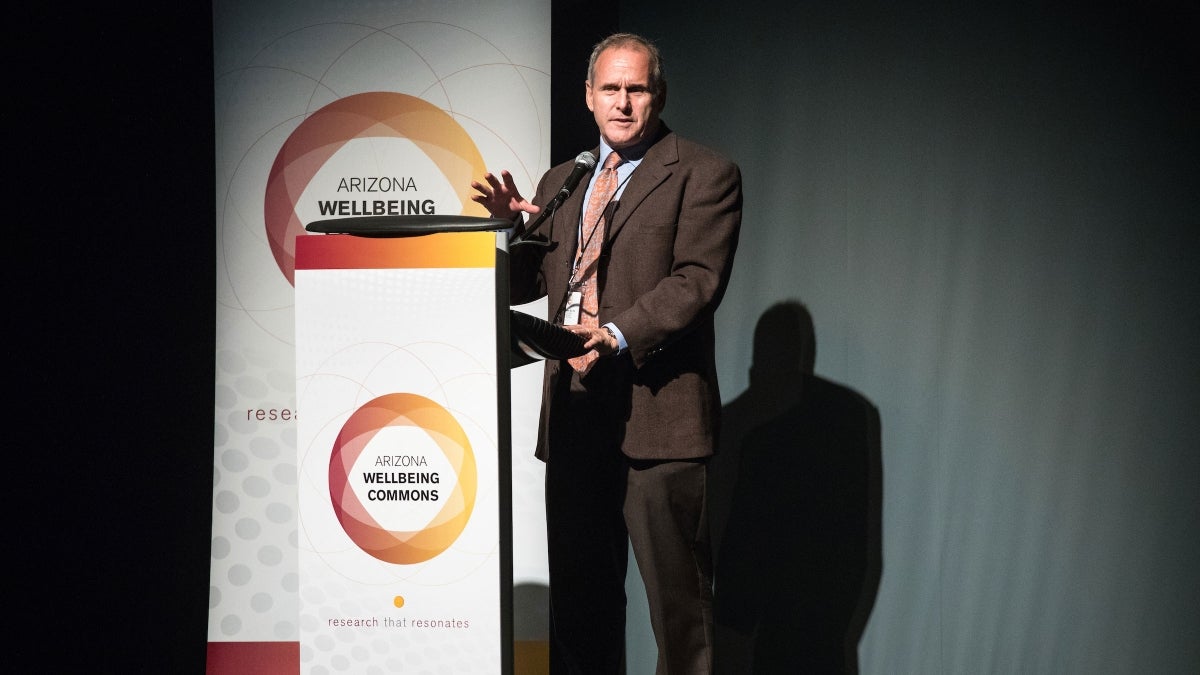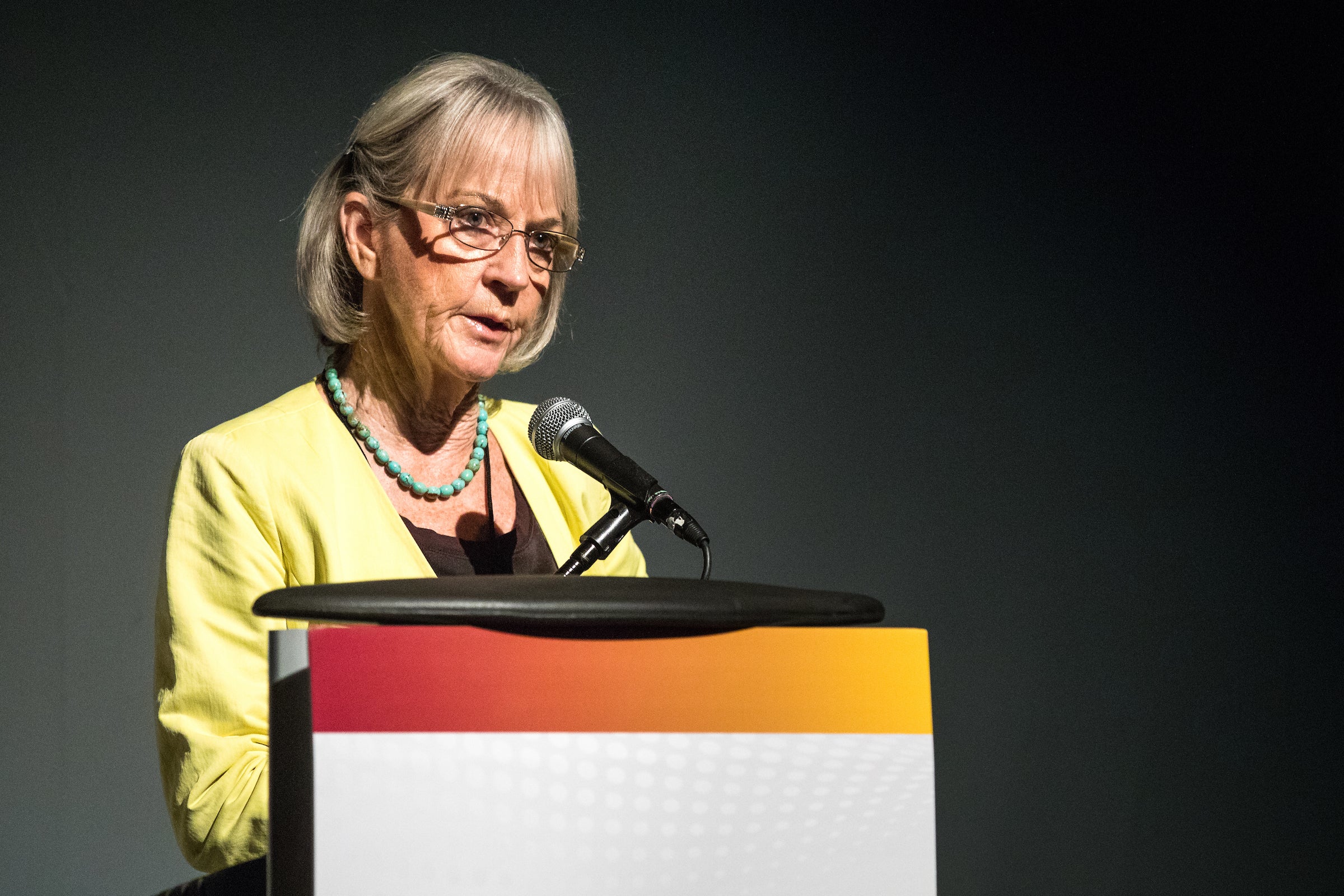Arizona State University is a key player in a new health research initiative designed to harness the expertise of scientists across the state to treat diseases like cancer and address such problems as unequal access to health care.
The Arizona Wellbeing Commons is a statewide collaboration of the three public universities, health providers, practitioners and community partners such as the Mayo Clinic and TGen.
The main goals of the project are to provide opportunities for experts around Arizona to align their research, share resources, mentor young researchers and get the word out.
“Collaboration is an advantage in Arizona, where biosciences research is still growing,” said Joshua LaBaerLaBaer also is director of the Biodesign Virginia G. Piper Center for Personalized Diagnostics and is a professor in the ASU School of Molecular Sciences and an adjunct professor of medicine at the College of Medicine, Mayo Clinic., who is leading the umbrella group. LaBaer is executive director of the Biodesign Institute at ASU.
“What makes a good collaboration is having people from different backgrounds and different approaches come together. That’s where a clinician might note an unmet need that a basic researcher might not be aware of.”
LaBaer (pictured above) spoke at the kickoff meeting for the Arizona Wellbeing Commons, held Wednesday at the Tempe Center for the Arts. The group will meet every year, and the six specialty divisions also will meet. Those are:
- neurobiology, aging, dementias and movement disorders, led by Salvatore Oddo, an associate professor in the School of Life Sciences in the College of Liberal Arts and Sciences at ASU
- cancer prevention, detection, management and treatment, led by Karen Anderson, an associate professor at ASU’s Virginia G. Piper Center for Personalized Diagnostics, in the Biodesign Institute
- viruses, immunity, microbiomes and infectious disease, led by Grant McFadden, the new director of the Biodesign Center for Immunology, Vaccines and Virotherapy at ASU
- nutrition, obesity, exercise and lifestyle, led by Steven Hooker, associate dean for research and professor in the School of Nutrition and Health Promotion in ASU's College of Health Solutions
- mental health, substance abuse, crime and behavior change, led by Michael Shafer, director of the Center for Applied Behavioral Health Policy at ASU and a professor in the School of Social Work in the College of Public Service and Community Solutions
- public health and health-care services, law, policy and equity, led by James Hodge, director of the Center for Public Health Law and Policy in the Sandra Day O’Connor College of Law at ASU
Each division will include an array of specialists, from basic researchers to practitioners, and the categories are intentionally broad, LaBaer said.
“Viewing well-being through multiple perspectives allows fresh approaches to any number of health issues, including those that are grand challenges in Arizona, like heart disease and diabetes,” he said.
This type of collaboration can potentially lead to funding sources, Oddo said.
“Often we don’t even know within our institutions what the people on the floor below us are working on,” said Oddo, who studies the molecular mechanisms underlying Alzheimer’s disease.
He said that the most impactful research will happen only when the research is complementary.
“We are in a unique position to do that,” he said. “This is a critical moment. There are many centers, from NIH to NSF, that have brain programs and are contributing large amounts of funds to this. They are looking for synergy across different disciplines and institutions.”
Complex diseases such as cancer and diabetes have complex origins and will require a multi-layered approach to research, Anderson said. For example, some cancers are related to obesity and others are linked to viruses.
“All of these efforts nationally and locally are starting to show improvements in the number of lives saved,” said Anderson, who also is an associate professor of medicine at Mayo Clinic Arizona. “But it’s happened as a result of collaboration and of large-scale implementation projects.”
ASU already has some high-impact collaborations, whose participants are part of the Arizona Wellbeing Commons initiative.
Anna Barker, co-director of the Complex Adaptive Systems Initiative at ASU and a professor in the School of Life Sciences, speaks at the kickoff meeting of the new Arizona Wellbeing Commons. Photo by Charlie Leight/ASU Now
For example, the Adaptive Global Innovative Learning Environment Clinical Trial had its roots in a think tank developed at ASU several years ago, according to Anna Barker, the director. The think tank evolved into AGILE, which is creating a new way of producing clinical trials for the most common form of adult brain cancer. Starting with 30 people, AGILE now includes neurosurgeons, oncologists, researchers and advocacy communities. The clinical trial will begin next year with 50 patients.
“We had hundreds of meetings. Nobody gave up, nobody walked away and everyone is still engaged,” said Barker, who also is co-director of the Complex Adaptive Systems Initiative at ASU and a professor in the School of Life Sciences.
“It’s a remarkable crowd-sourcing effort of the knowledge we needed to do this trial, and it’s an example of what can happen when we brought the right people to the table, supported the process and celebrated the victories.”
Another example is the REACH Institute, in the Department of Psychology, which bridges the gap between research and practice and includes several units at ASU.
“This group of scientists has been engaged in research for more than 25 years, studying what promotes resiliency in families and children,” said Anne Marie Mauricio, an assistant research professor and implementation scientist in the institute. The team developed successful interventions including Bridges to High School, a school-based prevention program shown to reduce high-risk behaviors such as substance use, and the Family Bereavement Program, which addresses the complex needs of children after the death of a parent.
“We had all of these great programs, but the communities weren’t using them. So how do we get them out there?” said Mauricio. “We work with community partners to understand from the users’ perspective how the programs need to work to fit the community.”
McFadden, who recently came to ASU from the University of Florida, said he’s planning a symposium of virologists in the state for November.
“One of the things I learned in moving here is that there is no repository of information,” he said. “Who are the scientists in the state, and what are they working on?
“This is a remarkable idea, and there’s nothing like it in Florida.”
Top photo: Joshua LaBaer, executive director of the Biodesign Institute at ASU, is leading the new Arizona Wellbeing Commons, a statewide health-research collaboration. Photo by Charlie Leight/ASU Now
More Health and medicine

The science of sibling dynamics: Why we fight, how we relate and why it matters
We have Mother’s Day, Father’s Day and even Grandparents’ Day. But siblings? Usually they get a hand-me-down sweatshirt and, with any luck, a lifetime of inside jokes.But actually, there is a…

New study seeks to combat national kidney shortage, improve availability for organ transplants
Chronic kidney disease affects one in seven adults in the United States. For two in 1,000 Americans, this disease will advance to kidney failure.End-stage renal failure has two primary…

New initiative aims to make nursing degrees more accessible
Isabella Koklys is graduating in December, so she won’t be one of the students using the Edson College of Nursing and Health Innovation's mobile simulation unit that was launched Wednesday at Arizona…



